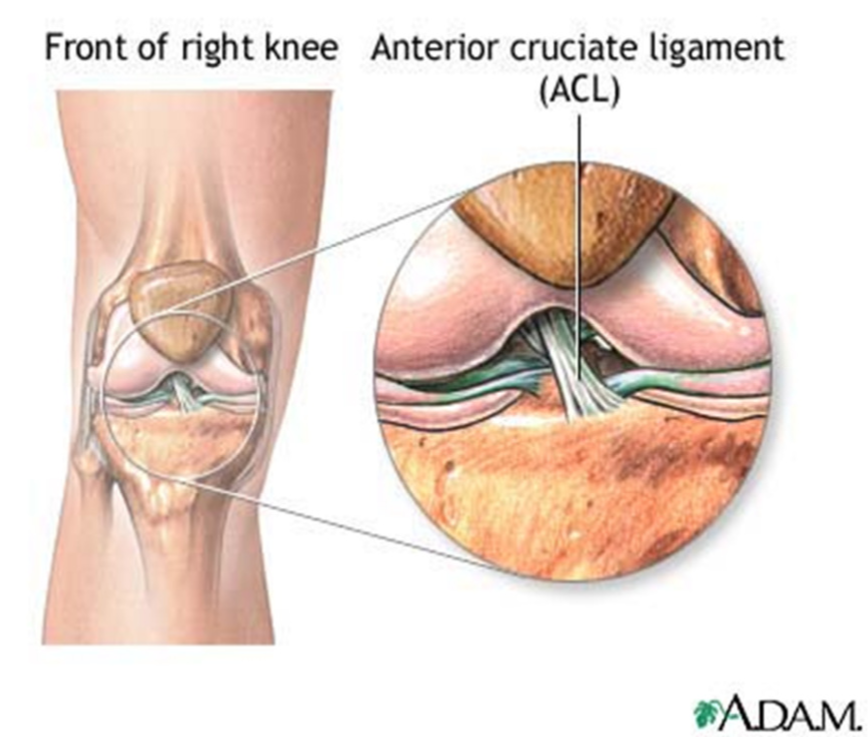ACL tears and recovery for women athletes
How ACL tears happen and why the recovery period is so long.
The ACL tear is one, if not the most talked about, injury in women's sports. In college soccer and basketball, teams can expect to have one or two players unavailable for the season due to ACL injuries. So, how exactly do ACL tears happen, and why does it take so long for them to recover?
Anatomy of the Knee
Four ligaments hold the knee together: the ACL, MCL, Posterior Cruciate Ligament (PCL), and the Lateral Collateral Ligament (LCL). The meniscus is a cartilage between the tibia (shin) and femur (thigh bone) that is commonly injured along with the ACL. All of these parts of the knee, when injured or torn, cause instability in the knee and prevent athletes from moving dynamically. Because of this, most athletes will need surgery, even for a partial ACL tear.
While ACL tears are not the most common knee injury, part of the reason they get so much attention is because of the length of recovery. Returning to high-level athletics after the injury takes nine to twelve months. For comparison, patella tendentious, LCL, PCL, meniscus, and nonsurgical MCL injuries usually sideline a player for 6-8 weeks.

How ACL tears happen
In women's soccer, 60 percent of tears come from non-contact plays where the athlete, compared to 40 percent in the men's game. ACLs can also tear from direct hits to the knee and overextension.
If an ACL tear is suspected, a physical exam and MRI can be performed to confirm the injury. It's also not uncommon for other parts of the knee to tear along with the ACL, making recovery more difficult. The real reason it takes so long for athletes to return to playing is because of how long it takes to strengthen the injured leg.
The Surgical Recovery Process
In surgery, doctors need to create an injury to fix the original injury by taking tendon pieces from the patella, hamstring, quad, or from a cadaver. Of the four, the patellar tendon has the highest success rate. The tendon will then be attached to the tibia and femur with screws, which causes bone injury and takes about six to eight weeks to heal.
After surgery, the body will turn that tendon into a ligament while the athlete remains in a brace and on crutches, depending on the injury. During this time, muscles atrophy quickly and take much longer to return than disappear. It's important to get back to your baseline or get better before returning to competition.
Unfortunately, the retear rate for ACL injuries is 30 percent, but for any injury, the reinjury rate will never be zero.
ACL Recovery
Treatment and standards of recovery have varied significantly. In 2007, six months was the recommended return-to-play timeline before dropping to four months, then back to six months. After additional research on the injury, it's been determined that nine to twelve months is more appropriate when returning to high-level athletics.
ACL Research
The numbers are not precise on how many more women than men suffer ACL tears, but women are two to six times more likely depending on the sport. Several factors, including anatomy, may impact the odds of an injury, but more research is needed.
In general, medical research on female bodies is lacking, and this applies to sports injuries as well. The International Federation of Professional Footballers, the Professional Footballers Association England, Nike, and Leeds Beckett University this year launched a three-year study on how to prevent ACL injuries in women's soccer that will hopefully have a global impact at all levels.
The mental health aspect is critical beyond the physical part of recovering from an ACL injury. If you care for your body but not your mind, eventually, all the difficulties of rehabbing the injury will surface.
